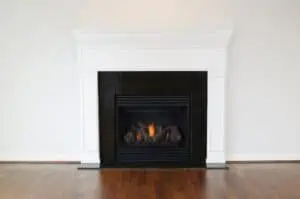When a Gas Fireplace Makes Noise When Off?
Gas fireplaces make life much easier for homeowners by allowing them to enjoy the warmth and comfort of a fire without the mess, hassle, and expense of wood. They’re also incredibly efficient, creating very little smoke and soot. However, like any home appliance, they are subject to occasional problems that may require professional attention.
(Looking for a”large electric fireplace repair“? Contact us Today!)

When a gas fireplace makes noise when off, it’s important to figure out what the problem is before you have to call in a repair technician. Taking the time to check for these common issues can save you money on repairs and prevent more serious problems from occurring down the road.
The first issue to investigate is the sound coming from the pilot light. Adjusting this light to the manufacturer’s recommended height and intensity should fix the problem. You should be able to find this information in your fireplace’s owner’s manual.
If the problem isn’t resolved, it may be because of an obstruction in the gas supply. Small bits of dirt and dust in the gas supply tube can cause a whistling noise when the air pressure in the gas line moves against the obstruction. This can happen even if the tube has been cleaned.
This can be an easy fix, but it’s worth checking with a qualified service technician to make sure there’s no hidden blockage. If the issue isn’t addressed, it can be dangerous for you and your family.
Another common problem with gas fireplaces is a whistling sound caused by an obstruction in the gas supply. Unlike the dust and dirt that may get into the gas supply line, this is a more significant problem. It can impact the way the fireplace works and potentially even lead to a leak that could be extremely dangerous for you and your family.
If the whistling sound comes from a log, it’s likely caused by an obstruction in the flexible connector tube that connects the gas log to the gas fireplace. These tubes must be installed with the log or in the fireplace, and they can only be made of stainless steel or aluminum.
These tubes should be cleaned on a regular basis to ensure that they are free of any blockages. This can be a fairly simple job, but you’ll want to use a brush or compressed air to thoroughly clear out the tubes and ensure they’re completely clean.
It’s a good idea to remove any ceramic logs from the fireplace before you attempt to clean the tubes. This will allow you to see the burner joints and slits where they’re located, letting you know exactly where the problem is.
This problem can be easily fixed, but it’s best to call a qualified service technician to take a closer look at the supply lines and burner assembly before trying to do any work on them yourself. They will have the tools and experience needed to handle this type of issue safely.
The haze on the glass doors can be a problem, as well. This can be caused by condensation or a mixture of fumes reacting with the heat of the flames. If this is the case, you will need to clean the glass with a special gas fireplace glass cleaner. If this doesn’t fix the problem, you may need to replace the fireplace with one of a higher quality.

